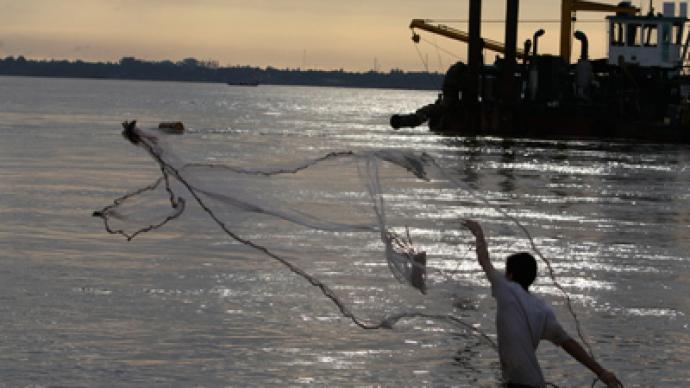Global 'water war' threat by 2030 - US intelligence

Nations will cut off rivers to prevent their enemies having access to water downstream, terrorists will blow up dams, and states that cannot provide water for their citizens will collapse. This is the future - as painted by a top US security report.
The Office of the Director of National Intelligence (ODNI), the organization that oversees US intelligence agencies such as the CIA and FBI, was commissioned by President Barack Obama to examine the impact of water scarcity worldwide on US security.And while the prospect of “water wars” has been touted for decades, it may start to become reality within a decade. The ODNI predicts that by 2040 water demand will outstrip current supply by 40 per cent.
Impoverished volatile states will be worst off
Water shortages “will hinder the ability of key countries to produce food and generate energy, posing a risk to global food markets and hobbling economic growth.” North Africa, the Middle East and South Asia will be hit the hardest, the report states.And while the coming shortage is a manageable problem for richer countries, it is a deadly “destabilizing factor” in poorer ones. As a rule, economically disadvantaged countries are already prone to political, social and religious turmoil, and failure to provide water for farmers and city dwellers can be the spark for wider “state failure.” Among those most vulnerable to this scenario are Sudan, Pakistan and Iraq, which are all locked in debilitating civil conflicts, and Somalia, which has effectively ceased to function as a state. ODNI envisages countries restricting water for its own citizens to “pressure populations and suppress separatist elements.” The report predicts many ordinary citizens will have to resort to the kind of purification tablets currently used by soldiers and hikers to obtain clean water.Most dangerously, there are whole clusters of unstable countries fighting for the same waterways.The report lists the Nile, which runs through Uganda, Ethiopia, Sudan and Egypt, the Jordan, which runs through Israel and several Arab countries, and the Indus, which is shared by Pakistan and India.These areas are managed by special commissions, and the report states that “historically, water tensions have led to more water-sharing agreements than violent conflicts.” But once there is not enough water to go around, these fragile pacts may collapse, with “more powerful upstream nations impeding or cutting off downstream flow.”Even without outright fighting, the ODNI says countries will use water as a tool of political leverage, similar to how gas and oil are used today. Infrastructure projects will become increasingly politicized: “States will also use their inherent ability to construct and support major water projects to obtain regional influence or preserve their water interests,” the report claims.Laos’ proposed $3.5 billion Mekong Dam has already been the subject of an international dispute with Cambodia and Vietnam, who say the dam will obliterate their fisheries and agriculture.
Water terrorism threat
And even international compromise is not likely to be enough to ensure water safety.“Physical infrastructure, including dams, has been used as a convenient and high-publicity target by extremists, terrorists, and rogue states, threatening substantial harm and this will become more likely beyond the next 10 years.”The report states that an attack on a single point in a water supply, such as a canal or desalinization plant is sufficient to deprive hundreds of thousands of clean water. In return, governments will have to implement costly safety measures that are likely to be of limited use, due to the extensive length of rivers that have to be protected.The ODNI says there is a decade to tackle the problems before they spiral out of control. It suggests revising international water treaties and investing in superior water purification technologies that will make the increasingly scarce resource plentiful again.













